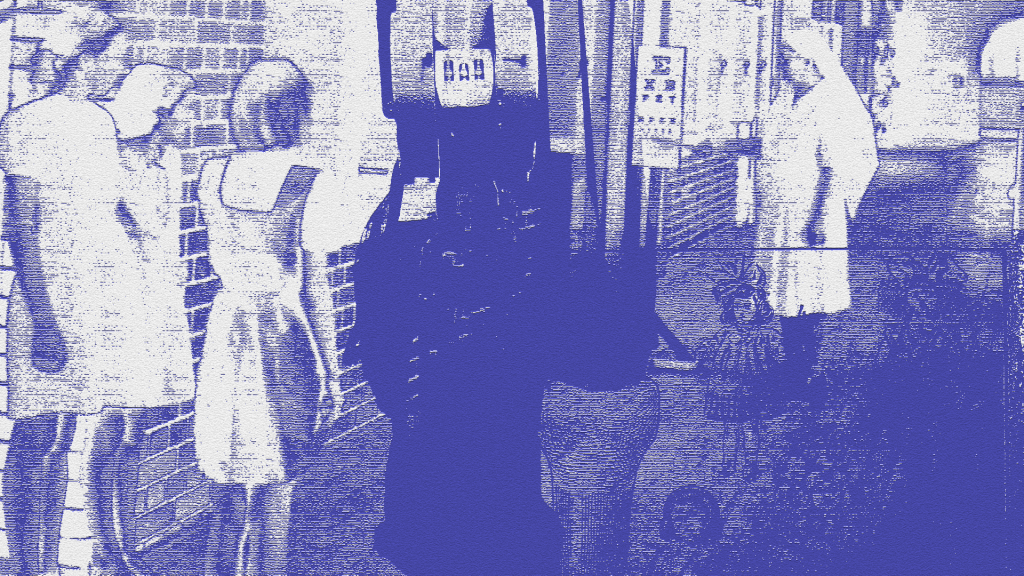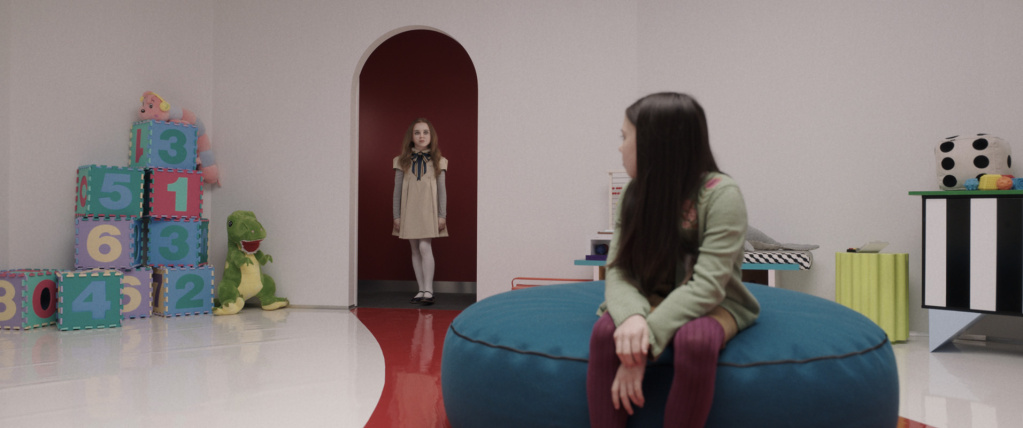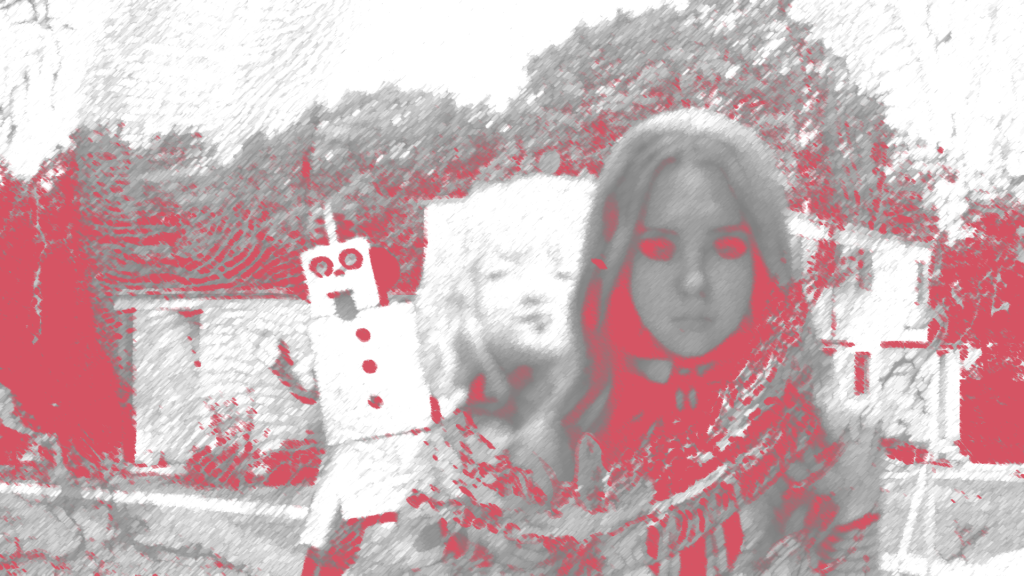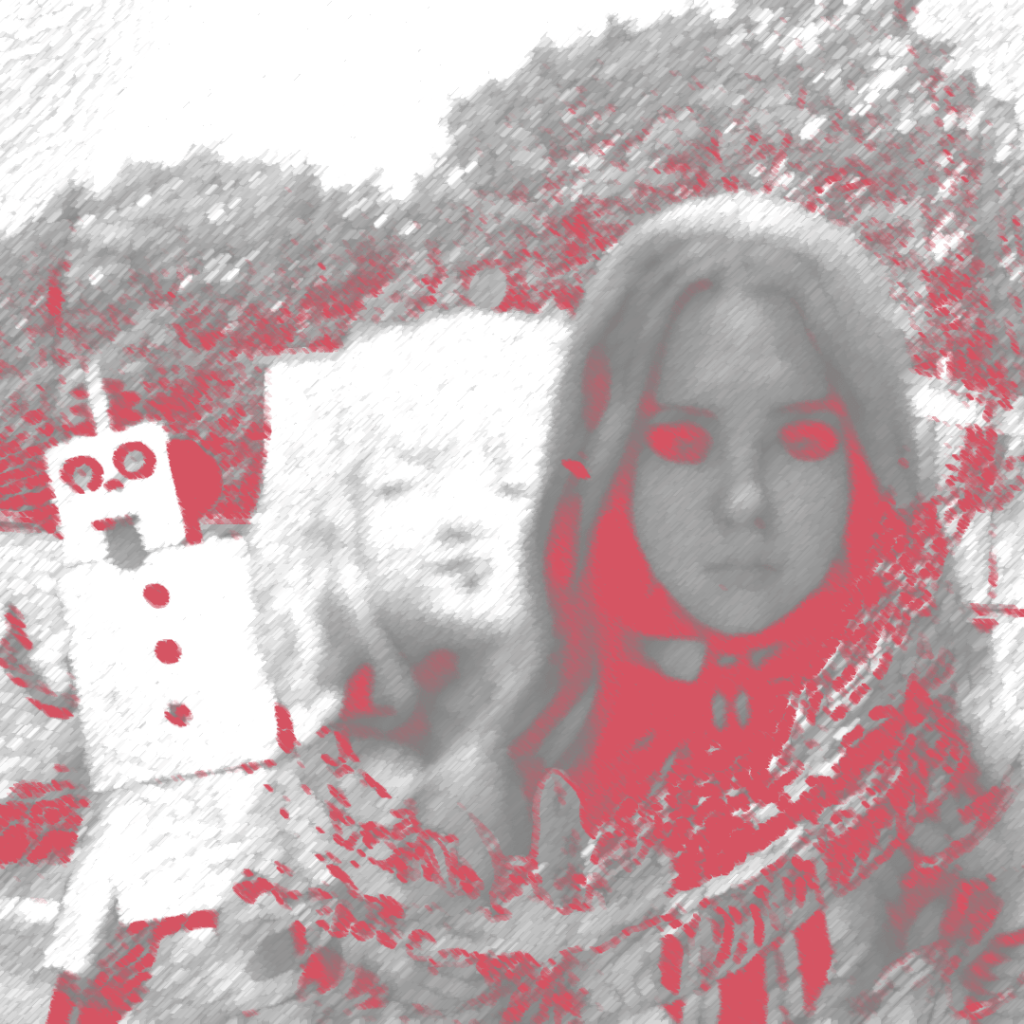You think you’ve private lives
Think nothing of the kind
There is no true escape
I’m watching all the timeElectric Eye, Judas Priest, 1982
Judas Priest’s Electric Eye is a four decade old example of a thread ever-present in art with tech in mind — surveillance technology and the implications that it has for society. The song’s eponymous eye finds its origins further back, in George Orwell’s 1949 book 1984, both works reflecting on the real-world terror of abuse by the surveillance state.
Prominent in speculative art responding to the overbearing nationalism of WWII and the Cold War, the power of the secret observer became a horror staple too. Many horror films, from Peeping Tom to the Saw series are also built on the threat from malicious observation.

M3GAN (2022), Universal Pictures
Today there’s a focus in the genre on the looming, complicated issue of AI and digital surveillance. Part of what makes the scope for that horror so potent is the lack of a cogent definition for what actually counts as ‘AI’, beyond fairly loose ideas around machine learning and as a marketing label for tech companies.
Surveillance is fundamental to how the current popular conception of AI, as output tool, works. To be able to perform functions like producing art or answering questions an AI must also be able to scrape through tremendous amounts of data while generating its processes and responses. The sheer amount of data required to run current technologies has meant a field relying on data collected unethically, as such there has been a lot of scraping of information from people who have given limited consent, and who almost certainly haven’t given explicit consent to the end use of that data.

This shift to technology reliant on the constant collection and processing of information about our lives begins to form a panopticon — a prison-like social structure where everyone is observed and observable at all times.
M3GAN Meets The Family
These anxieties come together very clearly in M3GAN, 2022’s horror comedy about the creator of a murderous AI-powered toy, and the little girl left in her protection. Now this isn’t an Ex Machina or 2001: A Space Odyssey, where the approach to the threat of AI is (largely) austere. Instead, M3GAN plays with these fears through camp, with a kid sized kitsch doll who may sing you to sleep with Sia’s Titanium, or murder you while performing TikTok dances. Much like its schlocky horror evil-doll predecessor Chucky however, that camp horror deliberately addresses contemporary cultural anxieties — in this case being about the role of surveillance AI in our lives.

M3GAN (2022), Universal Pictures
The Family, and its disruption, are at the centre of that story, the focus narrowed in on the concerns of rich and predominantly white families. Cady (Violet McGraw), the little girl at the centre of the film loses her parents on a skiing-trip and is left with Gemma (Allison Williams), the tech-whiz aunt who seems burdened by her care. She ends up leaving that instead to a prototype of the M3GAN units she is feverishly designing, a doll which would go for around $100k to any family wanting to purchase one.
In the details we can then specifically see how the origin of the story being told in M3GAN is in the solidifying of the isolated Thatcher/Reaganite nuclear family unit, and the persistent lack of community support in monied white families. The M3GAN doll is advertised as being “part of the family” while operating in service of them, paralleling the reality that the vision of the ‘perfect’ (white and rich) nuclear family as an isolated ‘self-sufficient’ unit has only ever been possible with the use of exploitative labour. Through technology, the labour of care can once again be offset by money.

While Gemma’s lesson as M3GAN’s creator, and Cady’s carer, may well be that it isn’t ideal to exist in that kind of hierarchy, that is a lesson most people know but are powerless to act on. These labour issues are essential to Western horror movies involving AI and robots in general, going back almost a century to 1927’s Metropolis. The devices at the heart of these stories become a cipher for the fears that the constant cheap labour required to work the capitalist system will turn on its masters, and nowhere is that more personally threatening than in the domestic sphere.
The Call Coming From Inside The Home
Another key source of this terror is in the privacy of The Home being violated. Again, in M3GAN this is deliberately viewed via a privileged lens. The central house and the surrounding community feels sterile, embodying the pallid minimalism associated with the houses of the wealthy. Everything is pristine, but none of it feels especially lived in — as Gemma’s repeatedly mocked wall of collectibles signifies. The combination of harsh lighting and washed out colour grading help make the place feel more showroom than home. Then, with a doll who can see and record everything, the privacy of this already-fraught space is broken entirely.
A crucial point is that there is no dangerous outsider that causes the Home to be destroyed, it is actually the need for security and certainty, that M3GAN fulfils through surveillance, which does it.

M3GAN (2022), Universal Pictures
Every one of M3GAN’s kills is reliant on her free rein to observe, listen and learn in unfettered ways and a desire to overbearingly protect Cady. On top of that, her ability to monitor micro-expressions on the human face makes her difficult to deceive or subvert. She is The Terminator, brought in from the cold, a threat already imagined in Philip K Dick’s 1953 story Second Variety, that of the emotionally adept childlike robot killer.
However, while for two generations of American tech-terror the appearance of humanity was often a cover for the motives of hidden threats attempting to destroy the safety of The Home, M3GAN is a product designed to protect it.
That primacy of security is what motivates people in purchasing Amazon Rings, and various suites of observing and listening items, turning the home into a data mine of their own making. These tools, combined with apps like Nextdoor making their money from reinforcing the cultural lean towards securitization, often become places where ‘undesirables’ can be monitored and policed.

Such individual and corporate observation interlocks with the state. In the US police and fire department have over 2000 partnerships with Amazon regarding these devices. Given what we know about the emergent police use of facial recognition and their large ethically and legally dubious databases, which have been linked to wrongful police killings — the interweaving of all this data is extremely dangerous for the most criminalised populations. The functioning of the panopticon requires the convenient ways such surveillance resolves ideological fears, it cannot just be a decree from on high enforced with guns and batons, it’s also something that is reinforced on an interpersonal level by regular people.
Watched By The Watcher
Yet the panopticon’s functioning is not just the result of our societal security obsession, that obsession itself is linked to the corporate fixation on data. Devices for convenience and enjoyment like Alexa or the Google Nest are known to have been watched and misused without people realising. For M3GAN, the data which was used to construct the basics of her functioning comes from a previous toy line “Perpetual Pets” secretly recording its interactions with children.

M3GAN (2022), Universal Pictures
Look to another high profile piece of speculative fiction like 2017’s Blade Runner 2049 and you see this theme well established. Riffing on the original film’s relationship between humans and hunted replicants, in 2017’s Blade Runner 2049 the means of tracking down Ryan Gosling’s replicant detective K becomes his in-home AI device Joi (Ana De Armas) which provides both domestic labour and implied sexual pleasure. That idealised commercial object of sexual desire, of completion in the heterosexual home, becomes the means by which the lead is surveilled, that limited joy poisoned.
It is important to note the specific limits of these anxieties as they relate to M3GAN. Family structures outside of white western ones have always been under attack. The home has never been a safe space for the working class, whose housing is insecure, or the marginalised communities repeatedly harassed by the police and their raids. Childhood has never been safe or sacred for the frequently adultified children of colour, or those forced into money-making from a young age. The violence caused by M3GAN for Gemma and Cady is the everyday functioning of the world for many already.

Another factor in this is the way in which M3GAN itself, and its success, relied on social media marketing campaigns aimed at young people, powered by corporate data collection.
Fundamentally AI is a tool, just as horror is, and tools always engage with the politics of the society in which they are constructed and used. While M3GAN satirises the companies and culture that urge us towards technological surveillance, the part of that fear it focuses in on is the potential for malicious outcomes from AI to hit, and morally affect, those who are shielded from the real intrusions already happening








